Section Quercus Higher classification Quercus sect. Quercus | Genus Quercus Scientific name Quercus ilex Rank Species | |
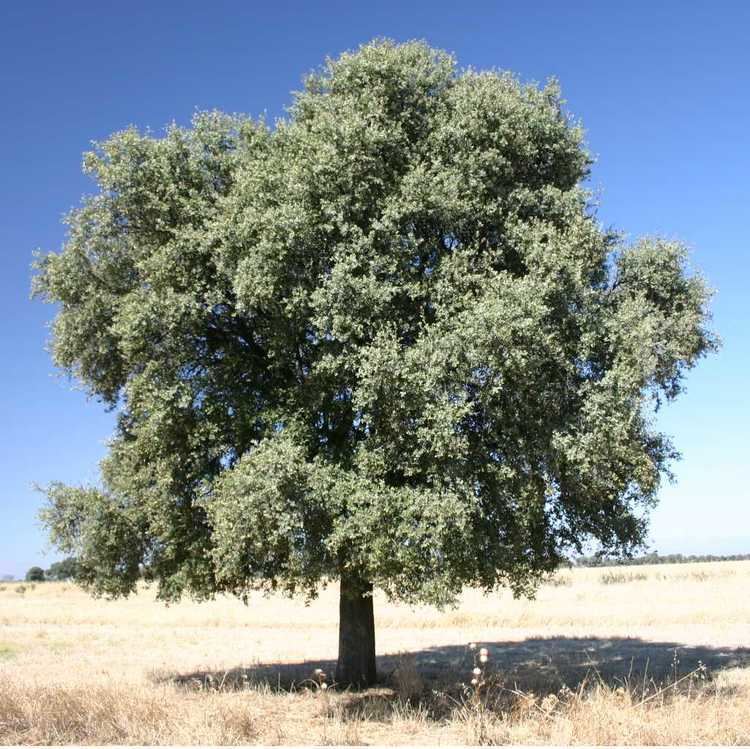 | ||
Similar Oak, Quercus suber, Quercus faginea, Strawberry tree, Quercus pubescens | ||
Plant id holm oak quercus ilex
Quercus ilex, the evergreen oak, holly oak or holm oak, is a large evergreen oak native to the Mediterranean region. It takes its name from holm, an ancient name for holly. It is a member of the white oak section of the genus, with acorns that mature in a single summer.
Contents
- Plant id holm oak quercus ilex
- Quercus ilex steeneik
- Etymology
- Description
- Subspecies
- Ecology
- Cultivation and uses
- Notable trees
- References
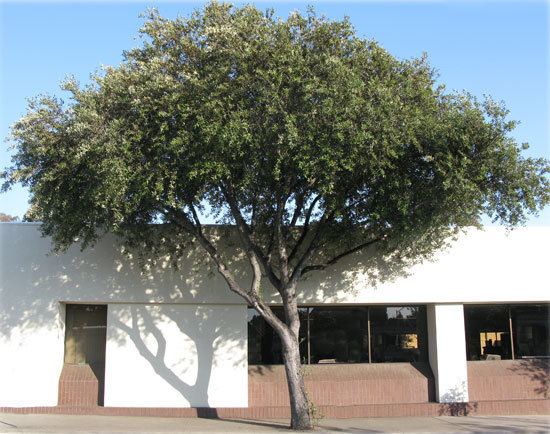
The first trees to be grown from acorns in England are still to be found within the stately grounds of Mamhead Park, Devon. From Britton & Brayley The Beauties of England and Wales (1803):
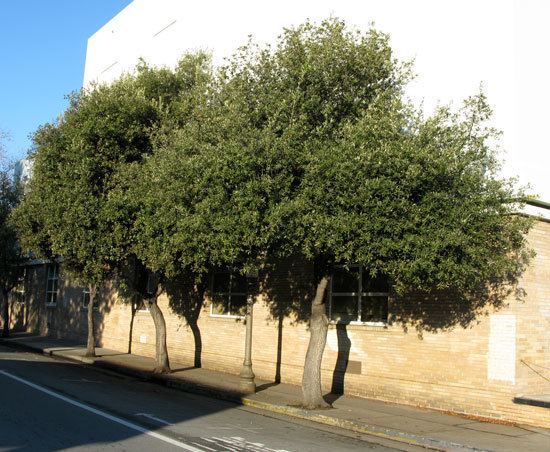
Quercus ilex steeneik
Etymology
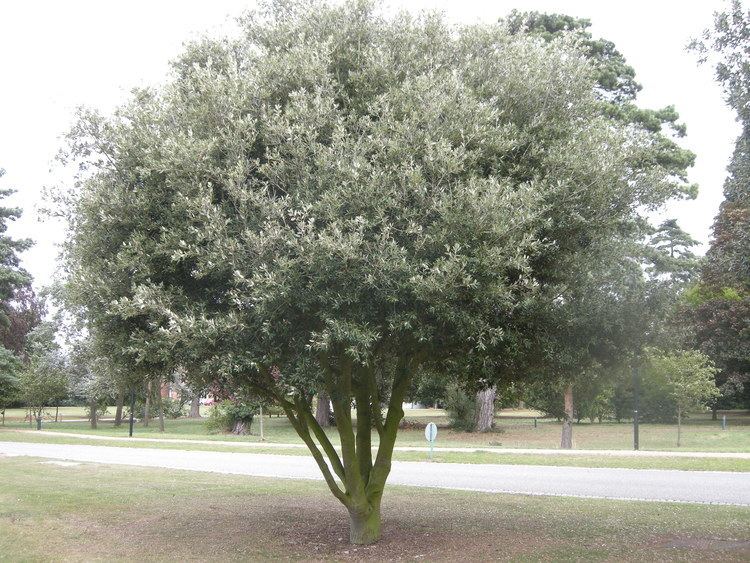
The resemblance of the foliage to that of the common European holly Ilex aquifolium, has led to its common and botanic names. The name ilex was originally the classical Latin name for the holm oak, but later adopted as a botanical genus name for the hollies.
Description
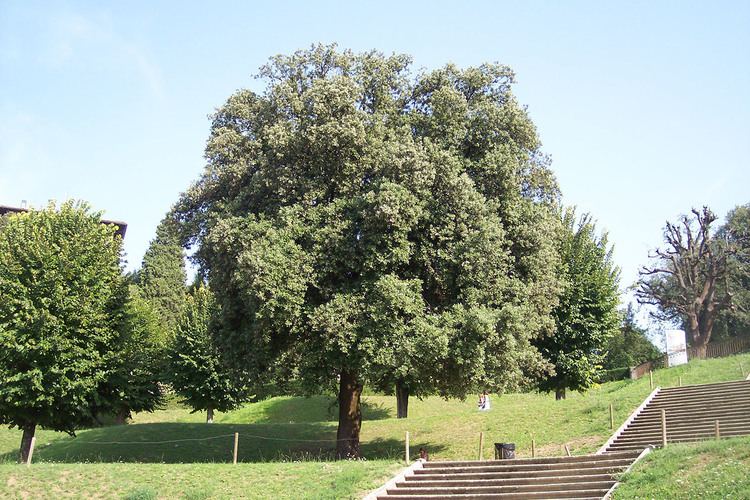
An evergreen tree of large size, attaining in favourable places a height of 21–28 m, and developing in open situations a huge head of densely leafy branches as much across, the terminal portions of the branches usually pendulous in old trees. The trunk is sometimes over 6 m in girth. The young shoots are clothed with a close grey felt. The leaves are very variable in shape, most frequently narrowly oval or ovate-lanceolate, 4–8 cm long, 1.2–2.5 cm wide, rounded or broadly tapered at the base, pointed, the margins sometimes entire, sometimes (especially on young trees) more or less remotely toothed. When quite young, both surfaces are clothed with whitish down, which soon falls away entirely from the upper surface leaving it a dark glossy green; on the lower surface it turns grey or tawny, and persists until the fall of the leaf; the petiole is 3–16 mm long. Fruits are produced one to three together on a short downy stalk, ripening the first season; the acorns usually 12–18 mm long in the UK, the cups with appressed, downy scales.
Subspecies
There are two subspecies:
Ecology
Holm oak grows in pure stands or mixed forest in the Mediterranean and often at low or moderate elevations, such as coastal California (the Spanish name for the holm oak, encina, is the origin of the name of many California localities). One of the plant associations in which holm oak is found is the holm oak/Atlas cedar forests of the Atlas Mountains. In Morocco, some of these mixed forests are habitat to the endangered primate, Barbary macaque, Macaca sylvanus.
Holm oak is prevalent from Portugal to Italy along the northern Mediterranean coastal belt, and from Morocco to Tunisia along the southern Mediterranean coast.
Holm oak is damaging biodiversity in the United Kingdom, and is listed as an alien invader. Normally the tree is unable to withstand severe frost, which would prevent it from spreading north, but with climate change, it has successfully penetrated these areas.
Cultivation and uses
The wood is hard and tough, and has been used since ancient times for general construction purposes as pillars, tools, wagons (Hesiod, Works and Days 429), vessels, and wine casks. It is also used as firewood, or in charcoal manufacture.
The holm oak is one of the top three trees used in the establishment of truffle orchards, or truffières. Truffles grow in an ectomycorrhizal association with the tree's roots.
The acorns, like those of the cork oak, are edible (toasted or as a flour), and are an important food for free-range pigs reared for ibérico ham production. Boiled in water, the acorns can also be used as a medicinal treatment for wound disinfections.
Q. ilex can be clipped to form a tall hedge, and it is suitable for coastal windbreaks, in any well drained soil. It forms a picturesque rounded head, with pendulous low-hanging branches. Its size and solid evergreen character gives it an imposing architectural presence that makes it valuable in many urban and garden settings. While holm oak can be grown in much of maritime northwestern Europe, it is not tolerant of cold continental winters.
Notable trees
The TROBI Champion in Gloucestershire measured 27 1⁄4 ft (8.3 m) in circumference at 1.2 m height in 1993. Another tree at Courtown House, Wexford, Ireland, reputedly planted in 1648, measured 20 m in height, with a spread of 43 m in 2010. A specimen in Milo, in Sicily, is reputed to be 700 years old while a small population on the slopes of northern village of Wardija in Malta are said to be between 500 and 1,000 years old. Prior to the Carthaginian period, holm oak was prevalent on the islands.
